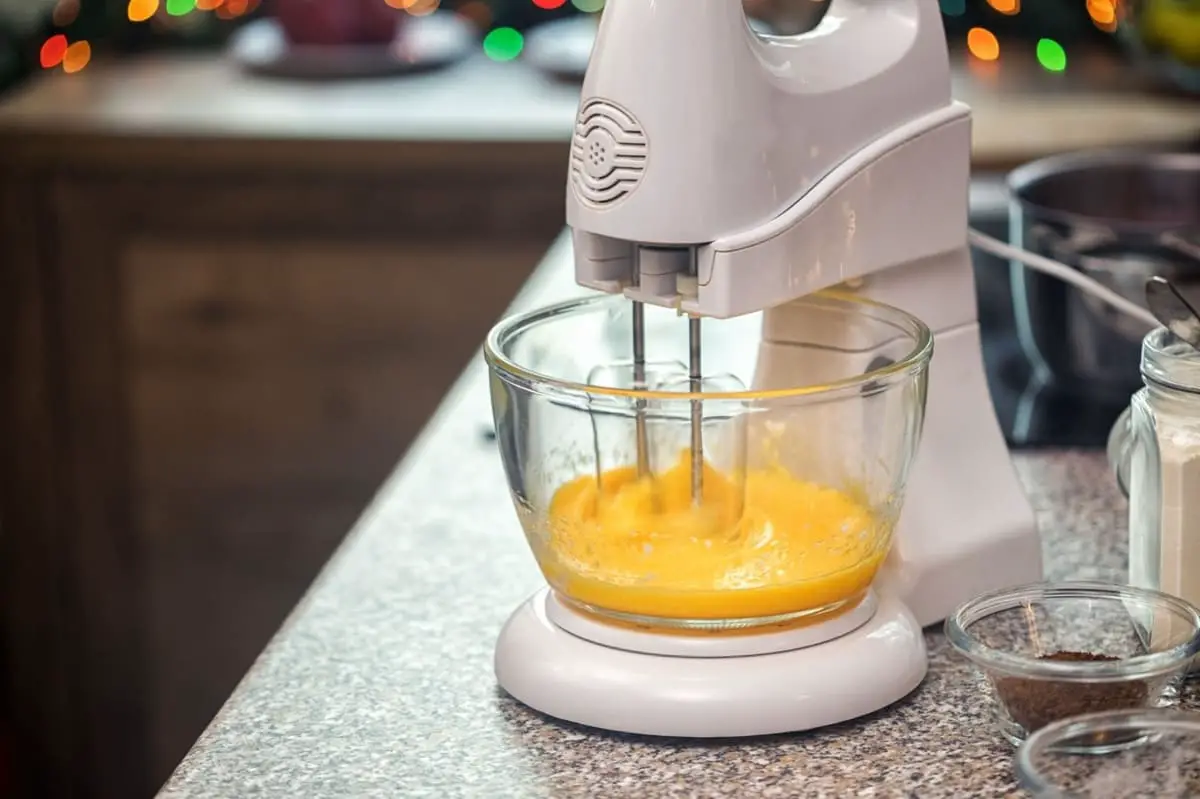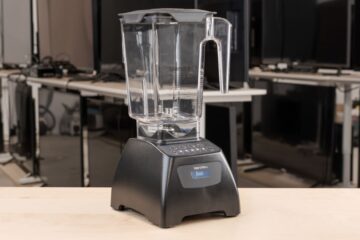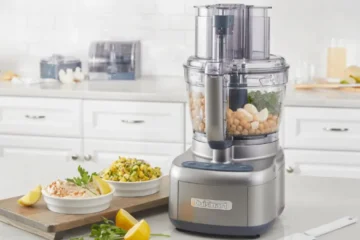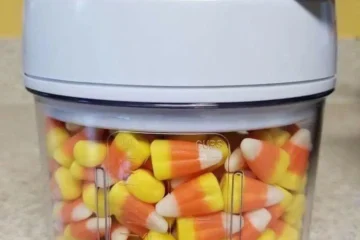Egg whites are a staple ingredient in many desserts and baked goods, but beating them by hand can be a tedious and time-consuming task. That’s why many home cooks and bakers turn to their food processors to help speed up the process. But can you beat egg whites in a food processor? And more importantly, is it safe to do so?
If you’ve ever struggled with achieving the perfect consistency for your meringue or angel food cake, this post is for you. We’ll explore the benefits and drawbacks of using a food processor to beat egg whites and give you some tips and tricks for getting the best results. Whether you’re a seasoned baker or just starting in the kitchen, this post will provide the information you need to decide whether a food processor is the right tool for the job.
So let’s dive in and discover if you can beat egg whites in a food processor and whether or not it’s safe to do so. With the right knowledge and technique, you’ll easily make light, airy desserts.
Can You Beat Eggs In A Food Processor?
Yes, you can beat eggs in a food processor. However, there may be better tools for this task, which may not be as fluffy as they would be if beaten with a whisk or a mixer. Also, the food processor can overbeat the eggs and cause them to be frothy, which may be better for some recipes. If you choose to beat eggs in a food processor, be sure to pulse the machine and stop it frequently to check the consistency of the eggs.
Can You Beat Egg Whites In A Food Processor?
Yes, it is possible to beat egg whites in a food processor. However, there are better methods for achieving the desired results. Food processors are designed for chopping and grinding food. They often don’t produce the same volume and consistency as a stand or hand-held mixer when beating egg whites.
The blades of a food processor can also introduce some air into the egg whites, which can reduce the volume of the meringue and prevent it from reaching its full potential.
How To Make Egg Whites In A Food Processor?
Here’s how to make egg whites in a food processor:
Separate the egg whites from the yolks
Crack the eggs and carefully separate the egg whites from the yolks. Make sure that no yolk gets into the egg whites, as this will prevent the egg whites from whipping properly.
Add the egg whites to the food processor
Pour the egg whites into the bowl of the food processor.
Start processing
Turn on the food processor and let it run until the egg whites have formed stiff peaks. This should take 2-3 minutes, depending on the strength of your food processor.
Stop processing
Once the egg whites have reached the desired consistency, stop the food processor. Overprocessing can cause the egg whites to become dry and grainy, so be careful to do it sparingly.
Use the egg whites
The egg whites are ready to be used in a recipe, such as a meringue, mousse, or pavlova.
Note:
Be aware that it might be more challenging to achieve a stable and fluffy meringue with a food processor than with a stand or hand-held mixer. It may take some experimentation to get the right consistency.
The pros and cons of beating egg whites in a food processor.
The pros of beating egg whites in a food processor.
Convenience:
A food processor is a handy kitchen appliance that can make beating egg whites much easier. With a food processor, you don’t need to worry about hand cramps or arm fatigue that can come from using a hand-held mixer or whisk.
Speed:
Beating egg whites in a food processor is generally faster than using a hand-held mixer or a whisk. This is especially true for large quantities of egg whites.
The cons of beating egg whites in a food processor.
Consistency:
The blades of a food processor can introduce some air into the egg whites, reducing the meringue’s volume and preventing it from reaching its full potential. Additionally, it can be harder to achieve a stable, fluffy meringue with a food processor than with a stand or hand-held mixer.
Over-processing:
It’s easy to over-process the egg whites in a food processor, which can result in dry and grainy meringue. Over-processing can also cause the egg whites to break down and become less stable, making it difficult to use them in a recipe.
Volume:
Food processors don’t tend to produce the same volume as a stand or hand-held mixer when beating egg whites. This can result in a meringue with less volume and a denser texture.
Tips for making perfect egg whites.
Use fresh eggs:
Fresh eggs produce better results than older eggs when making meringue. Older eggs tend to have weaker whites that don’t whip up, either.
Ensure the bowl and utensils are clean and dry:
Any fat or oil residue in the bowl or on the utensils can prevent the egg whites from whipping up properly. Clean and dry equipment is essential for making perfect egg whites.
Start with room temperature egg whites:
Room temperature egg whites will whip up faster and produce a better texture than cold egg whites.
Add cream of tartar:
Adding a pinch of tartar (an acidic ingredient) to the egg whites can help stabilize the meringue and prevent it from collapsing.
Gradually increase the speed:
Start beating the egg whites at a low speed and gradually increase the speed as they start to form peaks. This will help to produce a stable, fluffy meringue.
Be patient:
Beating egg whites takes time, so be patient and don’t try to rush the process. Overbeating can result in a dry and grainy meringue, so it’s important to stop the mixer once the egg whites have formed stiff peaks.
Store properly:
If you’re not using the egg whites immediately, store them in an airtight container in the refrigerator. When ready to use, let them come to room temperature before beating.
Can I Whisk In A Food Processor?
You can use a food processor for whisking. Still, the results may be more uniform and consistent than a traditional whisk. Some food processors have a whisk attachment that can be used for this purpose. However, if your food processor does not have one, you can still use the regular blade to whisk ingredients. However, you may need to stop and scrape down the sides of the bowl periodically to ensure that everything is evenly mixed.
Can You Whip Egg White In A Food Processor?
You can whip egg whites in a food processor, but there are better tools for the job. A food processor is designed for chopping, grinding, and mixing, not whipping. While getting stiff peaks with a food processor is possible, it may take longer and be more difficult to achieve than with a traditional electric mixer or by hand with a whisk.
How To Whip Egg Whites In A Food Processor?
To whip egg whites in a food processor, you must have a large bowl and a clean, grease-free blade. Crack the egg whites into the bowl and add any desired ingredients, such as cream of tartar, sugar, or salt.
Turn the food processor on and let it run until the egg whites form stiff peaks. This can take several minutes, so be patient and watch the egg whites as they whip.
It’s important to note that whipping egg whites in a food processor can be more difficult and take longer than with an electric mixer or by hand with a whisk, but it is possible.
What Should You Not Do With A Food Processor?
A food processor is a useful kitchen appliance, but there are certain things that you should refrain from doing with it. First, you should fill the food processor bowl sparingly, as this can cause the motor to work harder than it should, leading to overheating and damage to the appliance. It is also important to process hard or dense ingredients only for a short period, as this can cause the blade to be dull or even break.
Furthermore, using the food processor to puree boiling hot liquids is not recommended, as the sudden change in temperature can cause the bowl or the lid to crack. Finally, it would be best if you never attempted to process extremely fibrous ingredients, such as corn on the cob, as this can cause the motor to strain and potentially break down.
- What Temperature Is Medium High Heat? (In Kitchen Terminology)
- A Guide To Solving Problems Baking With Gas Ovens
What Can A Food Processor Do That A Blender Cannot?
A food processor is a versatile kitchen appliance with several functions that a blender cannot perform. A food processor has a larger bowl, stronger blades, and a more powerful motor. It is designed to chop, shred, knead, slice, and puree ingredients, allowing you to process a wide range of foods. Food processors also come with different attachments, such as a shredding disk, slicing disk, and dough blade, that make it easier to perform specific tasks.
On the other hand, a blender is primarily designed to puree and blend liquids and soft ingredients. While a blender can also chop to a certain extent, it does not have the same strength as a food processor, making it difficult to process hard ingredients such as nuts, vegetables, or meat.
Overall Thoughts
If you want to beat egg whites in a food processor, the answer is yes, if you take some precautions. Read the above article for safety precautions and instructions on how to beat egg whites in a food processor safely.
Frequently Asked Questions
Is It Ok To Use A Food Processor As A Blender?
Yes, it is okay to use a food processor as a blender. However, food processors are designed for chopping and grinding, while blenders are designed for blending liquids. Using a food processor as a blender may result in an inconsistent blend and not blending as smoothly as a traditional one.
Can A Food Processor Act Like A Blender?
A food processor can act like a blender to a certain extent. It can blend liquids, puree fruits, and vegetables, and make smoothies. However, its larger and more coarse blades may produce smoother results than a dedicated blender.
Can I Use A Food Processor Instead Of A Beater?
Yes, you can use a food processor instead of a beater. However, it may provide a different whipped consistency than a beater and may not handle small quantities well. It’s best to use a food processor for chopping, grating, and blending large quantities of ingredients.



